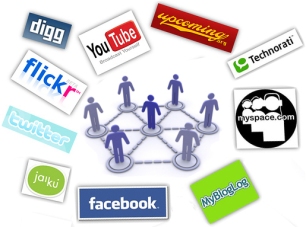This article originally appeared February 23, 2012 on Digital Brand Marketing Education & Interactives
Social media networking and marketing allows businesses to reach and provide tremendous amounts of information to clients, prospects and referral sources. However, face-to-face marketing still has an important place. Trade shows are one area where social media can provide significant support to face-to-face efforts and create opportunities for overall event marketing success. Exhibitors can use all the help they can get; The Center for Exhibition Industry Research (CEIR) reports that 80 percent of exhibitors make no attempts to follow up on their leads from trade shows. Considering how much is spent on trade shows this is a shocking statistic.
c/o http://skgtechnologies.com/
Trade shows are typically face-to-face, relationship-based marketing events. However, when in-person marketing activities are combined with social media, sales success can be improved, and the effectiveness and lifespan of marketing messages and branding can be extended well beyond the trade show itself.
According to marketing industry veteran David Clark, “Ratcheting up your social media marketing, before, during, and after a trade show is proving to be one of the most effective ways to drive traffic to your booth and cement the relationships.”
Before the show a business must leverage its collective social media presence to promote its appearance and related activities. Post information, pictures and/or videos (perhaps a preview of a new product or video invitation to visit the booth) about the event, the business’s participation and/or booth activities. The goal is to let people/prospects know the who, what, where and when and most importantly the why they should visit the company’s booth. Use social media to promote contests, giveaways or prizes that will be connected with a specific trade show appearance. If the trade show has its own hashtag, include it in all posts. Hashtags can be used to engage audiences, generate buzz and form relationships. Promoting the show in general helps attendance and all exhibitors should work together to mutually support each other. Often show producers can help lead a team of exhibitors and provide them content to help them promote their appearance as well the show.
Getting Connected
Connect with the show organizer/producer, show marketing firm and other exhibitors with whom there may be synergies. Non-competing exhibitors can use this strategy to build relationships and find cross selling opportunities as well. Exhibitors and show managers can and should share content via social media. Starting early and being proactive will allow exhibitors to reach more people and prospects with a variety of messages and images and get a jumpstart on creating a buzz which will attracts booth traffic. From a media relations perspective it is essential to get to know and communicate with show managers and their marketing firms. Here is a link to a short video I recently published with a few tips on trade show public relations strategies.
c/o http://www.diymarketers.com/
Post often to social media sites during shows. Show people what is happening and what will be happening at the booth or the show. Invite people to check-in on Facebook or Foursquare, perhaps for a drawing or other reward (show special) or simply to invite people to visit the booth in person to learn about something new. Be sure to remind attendees of the contests, giveaways, and all the exciting and interesting products or demonstrations happening at the booth. Post information about the show, pictures, video, or gems of information from seminars or workshops.
According to trade show marketing professional Timothy McClain, by “link[ing] your Foursquare account to your Twitter and Facebook accounts…you [can] check in, add a special note, and it will appear with your location link on Twitter and graphical map on Facebook and be shared across your channels.”
At the booth businesses can use smart phones and social media apps to grow their social media “followers” directly on site. Give access to social media pages in the booth by setting up a designated computer or tablet to allow users to “Like” the business on Facebook or follow on Twitter. Recruit booth visitors to “Like” the business using their smart phones as well a QR (Quick Response) code can be used or link visitors to Facebook on their phones. After Facebook is mobile enabled, people can then text “Like” and the business’s Facebook page username to 32665 and they will automatically “Like” the page.
After the show, continue to post pictures and video from the event. Post pictures and create albums to Flickr, Facebook, Picasa, etc. to show booth activity and interactions. Be sure to post thank you messages to the event organizers and to key prospects and contacts. Social media can assist with follow up. It provides the opportunity to present images, messages, video and other branded content in such a way that will allow prospects learn about the company, but not be hit with hard sales messages. Use LinkedIn and Facebook direct messages to start conversations, share information and continue relationship building.
Social media’s role in the trade show space is growing. It can make trades shows more fun, support branding and assist in the relationship building process. This is key to building trust and we all know that people want to do business with people that they trust, like and know are capable of doing the job. Social media can help create a buzz before the show, make interactions at the show itself more interesting and extend the marketing value of a tradeshow appearance.







I always spent my half an hour to read this blog’s articles or reviews daily along with a cup of coffee.